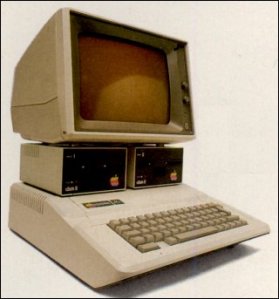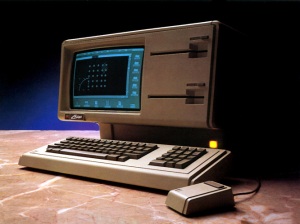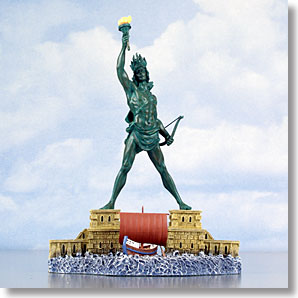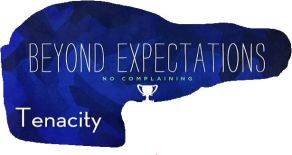I am asking about the time you noticed that special product (gorgeous car, designer shoe, computer) and in noticing, it hit you square between the eyes, was it love at first sight?

I was the Personal Computer Evangelist (aka analyst) at Pitney Bowes the second time love struck. The first time was at Olin Corporation. I hadn’t yet made the promotion to marketing but was networking my way around the company.

The Visicalc Machine
A friend in accounting said, do you want to see the Visicalc machine? Sure, why not and what the hey is “Visicalc”? She exclaimed, “It’s a spreadsheet you create and save. No more green bar. And we can edit it, anytime.”
I was amazed (being an MBA student I knew how tedious green bar work was); went upstairs to do my job, thinking WoW, she’s excited.
What was that funny little machine I saw? Somehow it seemed important and a whole lot different from the LA 120’s I did most of my research on. Then my boss provided me a PC with Visicalc and DOS. A door opened. I began to understand.
I had no idea at the time, but I was at the crossroads between Apple and Windows. I have remained there for more than 20 years. It had to grow on me, this feeling about a product.

Engineering dream machine
Fast forward…I am now the Corporate PC Consultant for the strategic arm of IT at Pitney Bowes. Yeah, cool job.
One of my responsibilities was to prepare CAR (capital appropriation requests) for all POs from dept heads to purchase departmental computing products – notice they are no longer “PC” when corporate buys them….
A call came from an engineering manager. He wished to purchase 10 Lisa machines. OK, fine, what’s a Lisa?
My boss and I took a road trip to visit said engineering manager and we viewed the Lisa. One look and I was hooked – it wasn’t at all like the PC I had in my office (the envy of all who had to share one) – it was beautiful.
When the engineer turned it on and showed us what it could do, I was hooked, line and sinker. I turned to my boss and said “We have to approve these things – but maybe not all of them right now.” (Always the pragmatist.)
I remembered the Apple IIe’s and the excitement of the accountant. The engineer was just as excited. These computers helped them do their jobs – better, faster, cooler, smarter…
Yeah, the CAR was approved and engineering used several Lisa Apples, maybe some the very few to be sold. The point is, they were used and successfully so.
That engineering manager saw what that the Apple Lisa’s computing power could do to make his team exceptional. He bought in, and he brought us IT gatekeepers in. That is the beauty of Steve Jobs’ vision. And this was before the second term of Steve. It gets better.
To the potential buyer it is obvious. The product is beautiful. It changes how we buyers approach computing in work, music listening, reading, gaming and sharing.
What mattered is Form over Function; but Function still remained, at the core. No matter what the Apple design – Jobs’ vision always incorporated capability within beauty, ease of use within strong feature sets; it made sense and it had style.
Not always in v 1.o, but Jobs’ team put a stake in the ground and came back to claim it. And they did, and they did that so well.
That’s execution. That’s vision. That’s excellent product management. We won’t go into marketing here. That’s another topic for another day. But he did that well too. A genius with the preso! I’ve blogged about his skill before today.
Am I a fan of Steve? Yes. He’s been able to stand successfully between two worlds – the world of the techno (geek) and the consumer (also business user) and made the two worlds talk to each other, understand each other, work together.
These two camps make beautiful products together.
What’s not to like, what’s not to be a fan of?
 Steve was able to stand between the two worlds of software and hardware. He was a competent in both. They say that is unusual, but he did it. Probably so, I’m applications and software myself…
Steve was able to stand between the two worlds of software and hardware. He was a competent in both. They say that is unusual, but he did it. Probably so, I’m applications and software myself…
These two functions do not stand apart, they are connected. Together, they create a great UX.
Maybe when all is said and done, that’s Steve’s greatest achievement – joining these two disciplines at the hip and making great products that work together because of this.
My hat is off to Steve; may his memory never die and his products…well, may they morph into better and best ideas.
“He lived at the intersection of technology and liberal arts.” Mossberg, WSJ
I could not have said it better.











